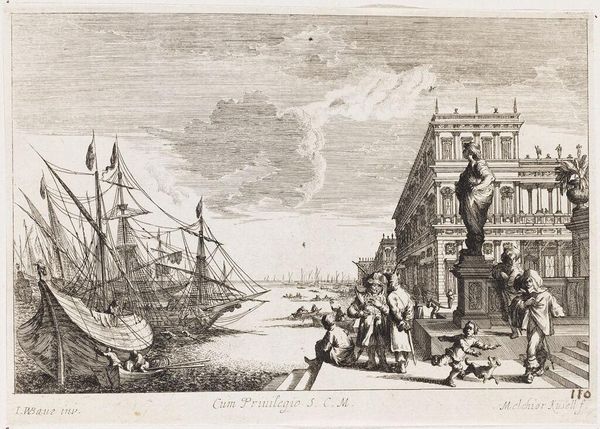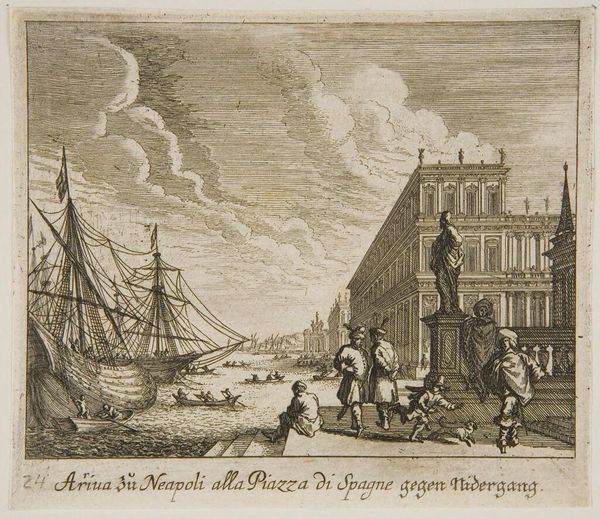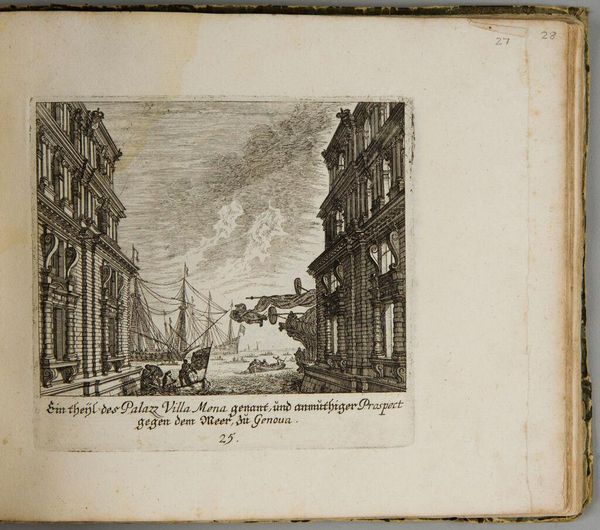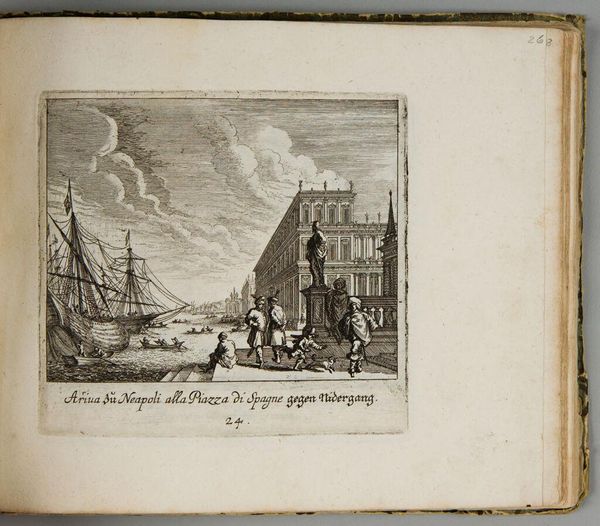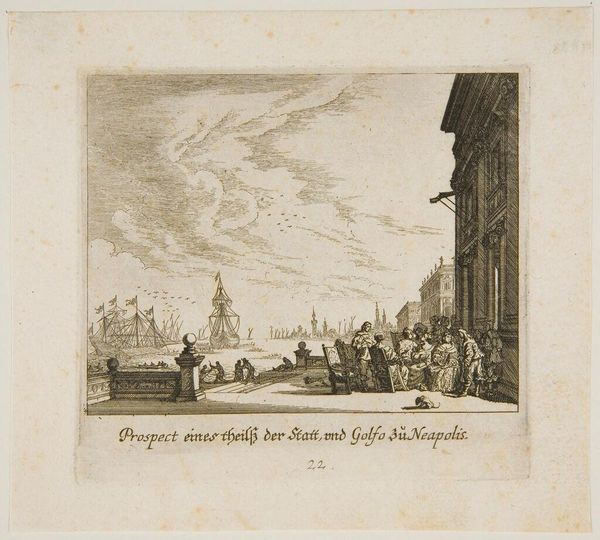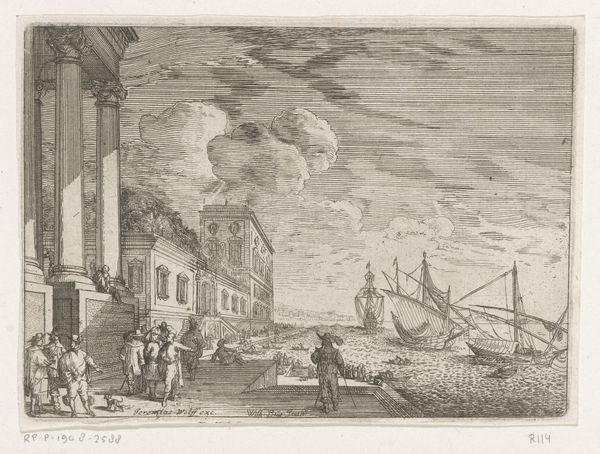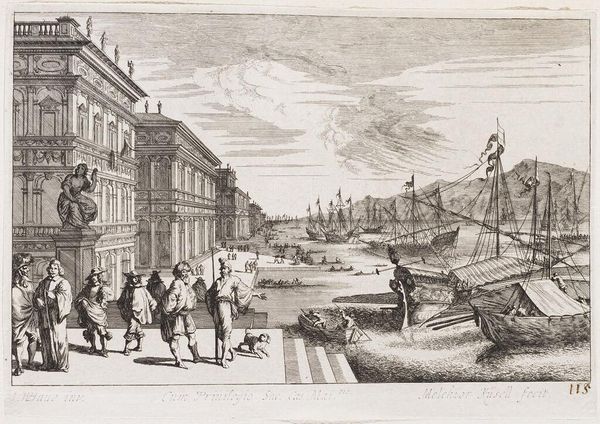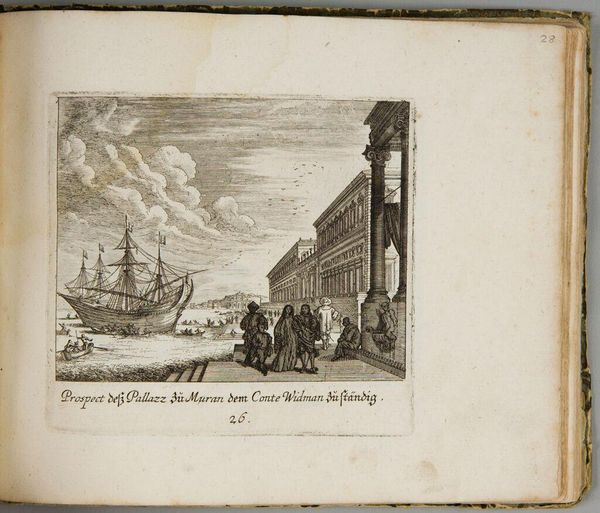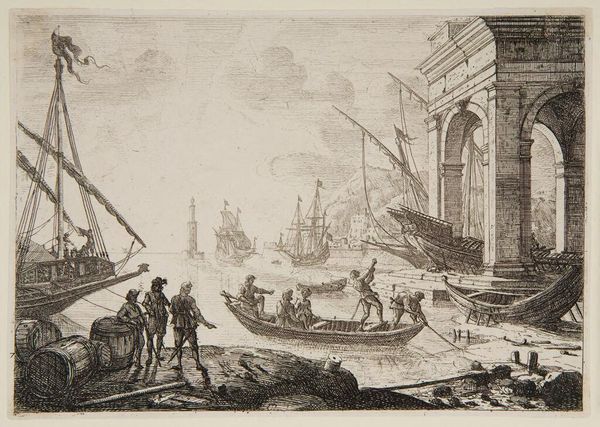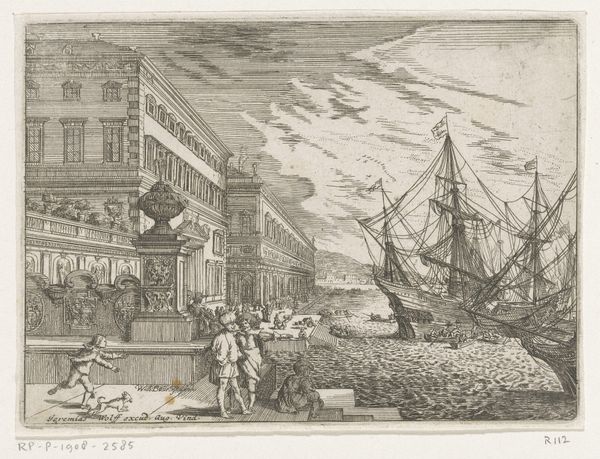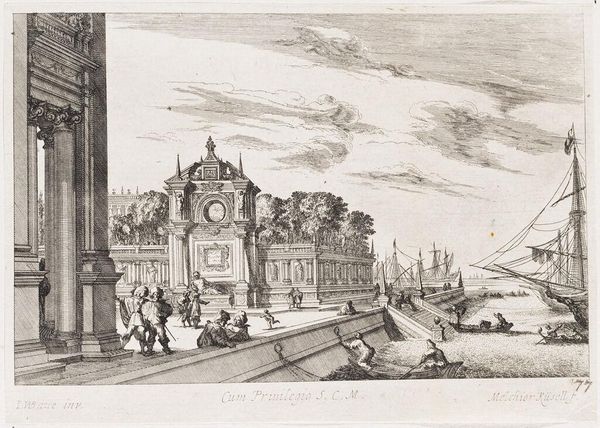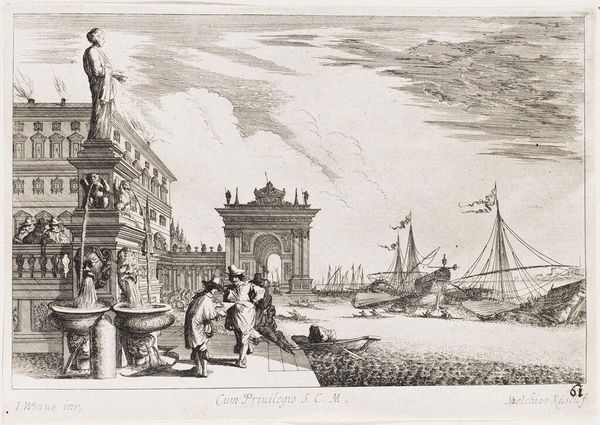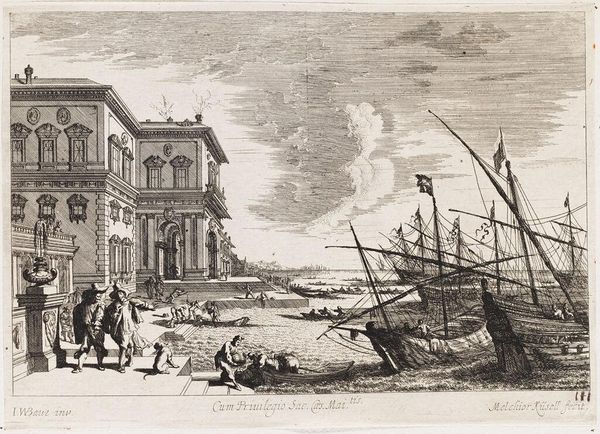
A Part of the Palace Known as the Villa Mena and a Glimpse of the Sea at Genoa 1681
0:00
0:00
Dimensions: plate: 10.8 x 11.8 cm (4 1/4 x 4 5/8 in.)
Copyright: CC0 1.0
Curator: Melchior Küsel’s etching, "A Part of the Palace Known as the Villa Mena and a Glimpse of the Sea at Genoa," pulls us into a scene of commerce and grandeur. Editor: The overwhelming feeling for me is one of stark contrast; the imposing architecture on either side frames a vibrant, almost chaotic harbor scene beyond. Curator: Precisely, the grand villa, likely a symbol of Genoese power, is juxtaposed with the bustling port. What meanings can we draw from the maritime imagery? Editor: Ships often represent journeys, trade, and the flow of culture. The figures on the shore almost seem to be welcoming or sending off these vessels, which embody connection and perhaps colonial ambitions. Curator: It seems Küsel uses the architectural details to signify wealth and stability, contrasting with the dynamism—the human activity—of the harbor. How might this interplay reflect the social fabric of Genoa at that time? Editor: Well, the symbols are clear: Power resides in the palaces, but life, opportunity, and change arrive by sea, constantly challenging the status quo. Perhaps that's what this image evokes so powerfully. Curator: Indeed. This etching invites us to consider the complex relationship between land and sea, stability and movement, and power and the potential for change. Editor: It certainly leaves one contemplating how enduring symbols like ships and architecture shape our understanding of history and place.
Comments
No comments
Be the first to comment and join the conversation on the ultimate creative platform.
